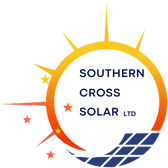When will my PV installation start to pay for itself?
The return on investment (ROI) from PV depends on several factors:
Incentives such as the Smart Export Guarantee (SEG):
This is payments made from your electricity supplier for surplus power you export to the grid.
Electricity Savings:
The amount you save on your energy bills depends on the electricity prices in your area and how much energy you use. The more you save, the quicker you’ll hit your ROI.
System Efficiency and Performance:
The efficiency of your system also affects how much electricity it generates and how quickly it pays for itself. High-efficiency panels might cost more initially but can lead to faster ROI.
Local Climate and Sunlight:
The amount of sunlight your location receives is another crucial factor. Areas with more sun exposure will see quicker ROI because your system will generate more electricity.
Electricity Prices:
If the cost of grid electricity rises over time, the savings from your solar system will increase, speeding up the ROI. In areas where electricity prices are high, your solar investment will typically pay off faster.
To summarise:
The ROI is typically seen once you have paid off the initial cost of the system, which is often referred to as the payback period.
Average Payback Period: The time it takes to break even and start seeing ROI often ranges from 6 to 12 years. After the payback period, the savings from your solar panels essentially translate into ROI.
Once you hit the payback period, you begin seeing significant ROI in the form of free electricity and SEG payments (aside from small maintenance costs). Solar panels can last 25-30 years, so the years after payback are pure savings.
To receive a no obligation quote for a PV installation which will include an estimate of the payback timescale please contact us.
